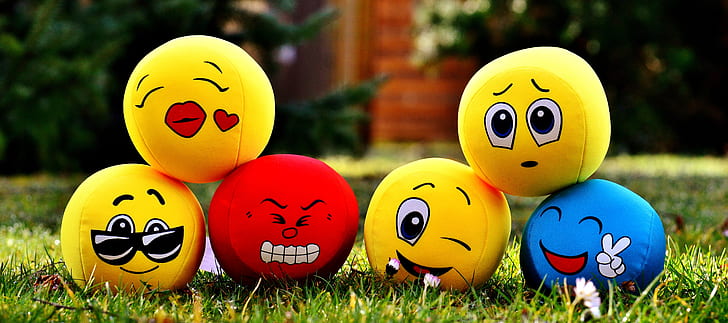Emoji: History, Meaning, And Function

TechsPlace | Emoji has made a great impact on the digital world since its creation around the 1990s. This digital symbol somehow has the same function as the carvings on the wall of the cavemen, which gives creativity and emotion by depicting pictures or signs. The emoji wins the heart of younger generations and even the old ones for its adorable faces and their creatively made symbols.
The emoji has a lot to offer, and it is continually changing together with its meanings. Some emojis do not only depict the apparent meaning but also, it can give a different approach when it comes to communicating. Knowing its origin, the present definition, and usage of a particular emoji is essential for the reason that it’s now considered as a digital language. And so, here is a brief history, meaning, and functions of these lovely emoji.
The Origin of Emoji
Emoji is rampant and can be seen almost everywhere. But do we know where these adorable digital symbols first came from? These cute digital symbols are made by a Japanese artist named Shigetaka Kurita. He was working at that time with a cell phone company in Japan called DOCOMO. DOCOMO and Kurita wanted to make a thing that can be used to depict some messages directly. That time, their focus was on weather forecasting.
Kurita’s first inspiration was the emoticons back in 1881. Yes, the emoticons are oddly old, but they were included in the digital computer language. Now, with Kurita’s innovation using emoticons as the basis, the emoji is born.
That time around the 1990s, the first batch of emojis was released. Also, it was part of the preparation for the launching of the first-ever mobile internet system. After that release, an estimation of 176 emojis has followed it up.
The first release or primary usage of the emojis was not that efficient at first because some mobile phones cannot run or see the symbol. Some of the people began to be confused as to why there are blank or empty boxes in their messages. But when a group of people petitioned the emojis to UNICODE for standardization, everything started to take place.
The UNICODE CONSORTIUM accepted the petition around 2010. After that, the usage of the emojis became more popular even outside Japan. As of now, the emojis are continually growing, changing, and adapting to the cultures of individual people and particular places.
The Meaning of Emoji
To start it off, “emoji” can be translated into the words “image character.” The meaning of emoji is broad and can sometimes be confusing. A lot of people, especially youngsters, are adding meaning to a particular emoji. Before, the emoji has a dull and bland meaning depending on the picture it depicts. For example, the fire emoji means a plain fire and the cloud emojis means cloud, etc.
But for now, a lot of emoji has been given different meanings. To further explain this, here’s an example. For the younger generations, the fire emoji means fire. But it can also mean you are hot or excellent, depending on how you use it. Another example is the thumbs up emoji which means affirmation or approval. But for them, it can also mean that the person is upset or mad at you.
These emoji are very versatile when it comes to giving meaning. Unlike before, Kurita’s goal is to make a virtual sign that can be easily understood by ordinary people. Now, the emoji is continually growing as well as the meanings of certain ones. This change can trigger the creativity of certain individuals. It’s the same reason why young people or even adults are so hooked to emojis.
The Function of The Emoji
The function of the emoji is always the same as to why it was created: to give a piece of quick information to the receiver. The emojis can act as a virtual symbol to the virtual world. For example, you are chatting with someone who is asking about the weather. You can send them rainy clouds emojis if it’s raining or sunny day emojis if it’s sunny outside. It’s the same function you can see in real life, like traffic lights.
In addition, the emoji can also give an emotion along with your message. For example, you are saying “I love you” to someone, and then you add heart emojis. At first, it was only a dull, bland message. But with the addition of emoji, it became more meaningful and emotional to the receiver. Another example is when you are telling someone you are sad. Adding sad or crying emoji makes it even sadder. Unlike before, this gives color to your chat.
These functionalities of the emojis make it more lovable and adorable to some. It is both useful and creative in any manner. So, the continuous popularity of the emojis is undeniably fast and high.
Conclusion
Knowing the history, meaning, and functions of these emojis are essential because the emoji culture is continually changing and improving. Having this basic knowledge about them can be helpful to you in many ways. It can also help you understand it more as it continually evolves.





